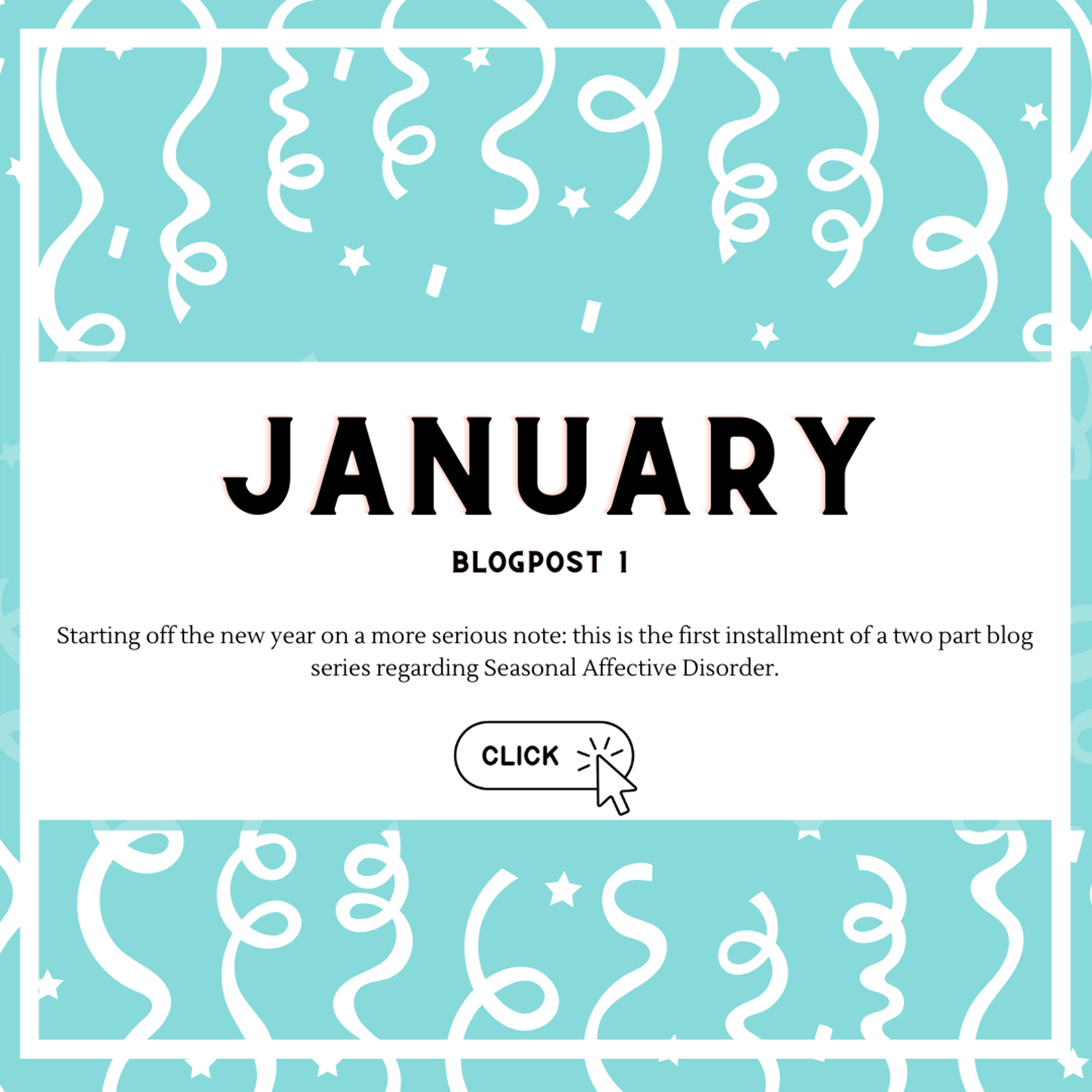See you later 2020, here comes the new year! This past year has been one full of some ups and major downs but we made it through. The events that have taken place for many of us have occurred during our formative years and will have a lasting effect on our collective mental health. This year we have an extra week of winter holiday which for some will be a well earned break and for others might be difficult to fall out of routine. The usual stressors of going home for the holidays have been amplified with added fears and concerns over health and safety amidst this pandemic. January is already a difficult month with short days, long nights and cold weather. Seasonal Affective Disorder (SAD) is a type of depression that results from a change in your internal biological clock and occurs during specific seasons in a year. (1) A lot of us who live in Canada are more likely to be affected by this disorder because of our distance from the equator. (2) SAD is more likely to develop in young people, and with any type of depression there are many symptoms and indicators. Among these include “sleep problems, loss or changes in appetite, irritability, loss of interest in hobbies, sex, people etc.” (3) Not only this, but SAD and other forms of depression are more likely to be found in the case of family history with it, and women rather than men. (4) The effects of SAD and other forms of depression vary with each individual but hold certain similar factors across those who are affected. A manifestation of such mental health challenges can be self harm and substance abuse. “Many people with a substance use or gambling problem have a co-occurring mental health problem.” (5) There are many different forms of this and a way to learn about substance abuse and self harm are the free courses offered by CAMH that help educate about the challenges that come with such struggles found here... http://www.camhx.ca/education/online_courses_webinars/mha101/harmreduction/Harm_Reduction_.htm. SAD seems to be affected by changes of the amount of sunlight someone intakes. That means the treatment for it can include light therapy which has very few side effects and can help mitigate some of the negative symptoms of SAD. (6) Additional treatments can include medication and cognitive behaviour therapy. (7) If you suffer from SAD do not disparage, there are many options for treatment. The second installment of this month’s posts will deal more with addiction and substance abuse in relation to SAD and other forms of depression. January is a dark and cold month so make sure to take care of yourself, until next time!
1 “Seasonal Affective Disorder (SAD),” Mental Health and Addiction Index, CAMH, accessed December 26, 2020, https://www.camh.ca/en/healthinfo/mental-illness-and-addiction-index/seasonal-affective-disorder.
2 Ibid.
3 Ibid.
4 Ibid.
5 “Key Messages,” Addiction 101, CAMH, accessed December 27, 2020, https://moodle8.camhx.ca/moodle/mod/book/view.php?id=82.
6 “SAD,” CAMH.
7 Samuel Galima, Stephen Vogel, and Adam Kowalski, “Seasonal Affective Disorder: Common Questions and Answers,” American Family Physician 102, no.11 (December 2020): 668. www.aafp.org/afp.
